Showing Spotlights 169 - 176 of 333 in category All (newest first):
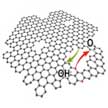 The oxygen reduction reaction (ORR) is the core process - but also the bottleneck - for the cathode reaction of energy-conversion devices like certain types of fuel cells and metal-air batteries. Nanocarbon materials are very promising alternatives for the noble metal catalysts, especially platinum, that have been used to boost this reaction. New work comprehensively reviews and correlates activity origins of nanocarbon-based ORR electro�catalysts, considering the dopants, edges, and defects. Specific doping at defective edges is expected to render practical applications for metal-free nanocarbon electrocatalysts.
The oxygen reduction reaction (ORR) is the core process - but also the bottleneck - for the cathode reaction of energy-conversion devices like certain types of fuel cells and metal-air batteries. Nanocarbon materials are very promising alternatives for the noble metal catalysts, especially platinum, that have been used to boost this reaction. New work comprehensively reviews and correlates activity origins of nanocarbon-based ORR electro�catalysts, considering the dopants, edges, and defects. Specific doping at defective edges is expected to render practical applications for metal-free nanocarbon electrocatalysts.
Jan 12th, 2017
 Methanol fuel cells are widely considered as a potential source of future energy due to the usage of methanol as a liquid fuel; simplicity in operation; higher energy density of methanol fuel; high power density obtained etc. However their commercialization is greatly hindered by methanol crossover taking place in the membrane area of fuel cells, leading to short circuits and greatly affecting overall performance. By using two-dimensional (2D) materials - graphene and hexagonal boron nitride (hBn) - in methanol fuel cell systems, researchers now have overcome this bottleneck.
Methanol fuel cells are widely considered as a potential source of future energy due to the usage of methanol as a liquid fuel; simplicity in operation; higher energy density of methanol fuel; high power density obtained etc. However their commercialization is greatly hindered by methanol crossover taking place in the membrane area of fuel cells, leading to short circuits and greatly affecting overall performance. By using two-dimensional (2D) materials - graphene and hexagonal boron nitride (hBn) - in methanol fuel cell systems, researchers now have overcome this bottleneck.
Dec 7th, 2016
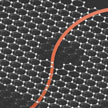 Traditionally, the size of electrode materials in supercapacitors is reduced to nanometers to enable high surface area and more room for storing more amounts of energy. But the microscopic electron distribution in nanocarbons limits the total amount of stored energy through a property called 'quantum capacitance'.
Although a lot of charge could be stored in the pores on nanocarbons due to their high surface area, their inherently low quantum capacitance reduces the net energy that could be drawn from supercapacitors. Researchers have controllably added nitrogen atoms to graphene to achieve carbon supercapacitors ready for practical applications.
Traditionally, the size of electrode materials in supercapacitors is reduced to nanometers to enable high surface area and more room for storing more amounts of energy. But the microscopic electron distribution in nanocarbons limits the total amount of stored energy through a property called 'quantum capacitance'.
Although a lot of charge could be stored in the pores on nanocarbons due to their high surface area, their inherently low quantum capacitance reduces the net energy that could be drawn from supercapacitors. Researchers have controllably added nitrogen atoms to graphene to achieve carbon supercapacitors ready for practical applications.
Aug 25th, 2016
 Sodium-ion batteries (SIBs) represent an attractive alternative to lithium-ion batteries, owing to the fact that sodium resources are practically inexhaustible and evenly distributed around the world while the ion insertion chemistry is largely identical to that of lithium. Researchers have now rationally designed and fabricated a sodium ion full battery where both of the cathode and anode materials possessed very unique two-dimensional nanostructured architecture. The 2D nanostructured architecture results in excellent rate capability and stable cycling performance.
Sodium-ion batteries (SIBs) represent an attractive alternative to lithium-ion batteries, owing to the fact that sodium resources are practically inexhaustible and evenly distributed around the world while the ion insertion chemistry is largely identical to that of lithium. Researchers have now rationally designed and fabricated a sodium ion full battery where both of the cathode and anode materials possessed very unique two-dimensional nanostructured architecture. The 2D nanostructured architecture results in excellent rate capability and stable cycling performance.
Aug 17th, 2016
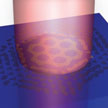 Graphene, one of the most exciting two-dimensional materials, has shown extraordinary optical properties due to strong surface plasmon polaritons supported by graphene nanostructure. Graphene metasurfaces show plasmonic resonance bands that can be tuned from mid-infrared to terahertz regime. These plasmonic devices can be used for biosensing, spectroscopy, light modulation and communication applications. Researchers now demonstrate for the first time an effective method to pattern large area graphene into moire metasurfaces with gradient nanostructures having multiband resonance peaks in mid infrared range.
Graphene, one of the most exciting two-dimensional materials, has shown extraordinary optical properties due to strong surface plasmon polaritons supported by graphene nanostructure. Graphene metasurfaces show plasmonic resonance bands that can be tuned from mid-infrared to terahertz regime. These plasmonic devices can be used for biosensing, spectroscopy, light modulation and communication applications. Researchers now demonstrate for the first time an effective method to pattern large area graphene into moire metasurfaces with gradient nanostructures having multiband resonance peaks in mid infrared range.
Aug 16th, 2016
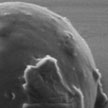 Researchers have demonstrated that the coupling of pristine graphene sheets on practically any polymer surface can be accomplished in mild reaction conditions and in aqueous medium. The method leaves intact the 2D planar structure of graphene preserving its original features. This novel hybrid construct enables in vivo photoacoustic signal enhancement and is a very promising step forward for an implementation of photoacoustic imaging, a powerful preclinical diagnostic tool.
Researchers have demonstrated that the coupling of pristine graphene sheets on practically any polymer surface can be accomplished in mild reaction conditions and in aqueous medium. The method leaves intact the 2D planar structure of graphene preserving its original features. This novel hybrid construct enables in vivo photoacoustic signal enhancement and is a very promising step forward for an implementation of photoacoustic imaging, a powerful preclinical diagnostic tool.
Jun 30th, 2016
 First there was graphene, an atomically thin film of carbon atoms with record-crushing properties. Then thousands of other atomically thin materials entered the scene which can be layered to create new hybrid supermaterials - so called van der Waals heterostructures. Until now, only a few leading groups have been able assemble these materials with sufficiently high quality. With the 'hot pickup' stacking method, researchers aim to make atomic scale nano-assembly faster and easier than ever before.
First there was graphene, an atomically thin film of carbon atoms with record-crushing properties. Then thousands of other atomically thin materials entered the scene which can be layered to create new hybrid supermaterials - so called van der Waals heterostructures. Until now, only a few leading groups have been able assemble these materials with sufficiently high quality. With the 'hot pickup' stacking method, researchers aim to make atomic scale nano-assembly faster and easier than ever before.
Jun 16th, 2016
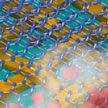 Inspired by the multiple water purification mechanisms of water hyacinth, a group of researchers has combined different decontamination techniques - adsorption, photocatalytic degradation, distillation - into a single paper-based composite system for water purification by using solar light as the clean energy input. Compared with water treatment with a single mechanism, the multifunctional composite reported in this work could significantly enhance the clean water generation efficiency and maximize the use of the broad-spectrum solar light in a facile and effective way.
Inspired by the multiple water purification mechanisms of water hyacinth, a group of researchers has combined different decontamination techniques - adsorption, photocatalytic degradation, distillation - into a single paper-based composite system for water purification by using solar light as the clean energy input. Compared with water treatment with a single mechanism, the multifunctional composite reported in this work could significantly enhance the clean water generation efficiency and maximize the use of the broad-spectrum solar light in a facile and effective way.
Jun 14th, 2016
 The oxygen reduction reaction (ORR) is the core process - but also the bottleneck - for the cathode reaction of energy-conversion devices like certain types of fuel cells and metal-air batteries. Nanocarbon materials are very promising alternatives for the noble metal catalysts, especially platinum, that have been used to boost this reaction. New work comprehensively reviews and correlates activity origins of nanocarbon-based ORR electro�catalysts, considering the dopants, edges, and defects. Specific doping at defective edges is expected to render practical applications for metal-free nanocarbon electrocatalysts.
The oxygen reduction reaction (ORR) is the core process - but also the bottleneck - for the cathode reaction of energy-conversion devices like certain types of fuel cells and metal-air batteries. Nanocarbon materials are very promising alternatives for the noble metal catalysts, especially platinum, that have been used to boost this reaction. New work comprehensively reviews and correlates activity origins of nanocarbon-based ORR electro�catalysts, considering the dopants, edges, and defects. Specific doping at defective edges is expected to render practical applications for metal-free nanocarbon electrocatalysts.
 Subscribe to our Nanotechnology Spotlight feed
Subscribe to our Nanotechnology Spotlight feed





